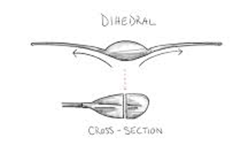Paddle Blade Shapes
Here’s a run down on the basics of different types of paddle shapes
Wing
Also known as scoop paddles these curved blade paddles increase the distance you travel per stroke using their shape to generate lift (like an aeroplane wing through the air)

LOW Angle
For paddling with your hands closer the deck, Paddle shaft is more horizonal (has a lower angle to the water). Blade is longer and thinner with a steeper angle at the end of the blade

HIGH Angle
For paddling with your hands higher, Paddle shaft is more vertical (has a higher/ more acute angle to the water). The blade is shorter and wider and closer to symmetrical at the end.

Greenland
Long and thin blades- these are a traditional shape originating in Greenland, most commonly used on sea kayaks.

Aspects of Shape
Dihedral
Curves away from the centre of the paddle, lets water shed off the blade more evenly in the water reducing flutter so you don’t have to hold as tight.

Symmetrical
Best suited to a vertical stroke technique and most common only on SUP, Canoe paddles, and Greenland paddles, it may also be found on some entry-level white-water paddles, otherwise relegated to older paddle designs.

Asymmetrical
Nearly all paddles are asymmetrical- Exceptions are Greenland paddles, SUP & canoe paddles. Asymmetrical paddles try to make an equal amount of the blade surface area above and below the centre line of the blade. So it won’t try and twist in your hands whilst paddling.

